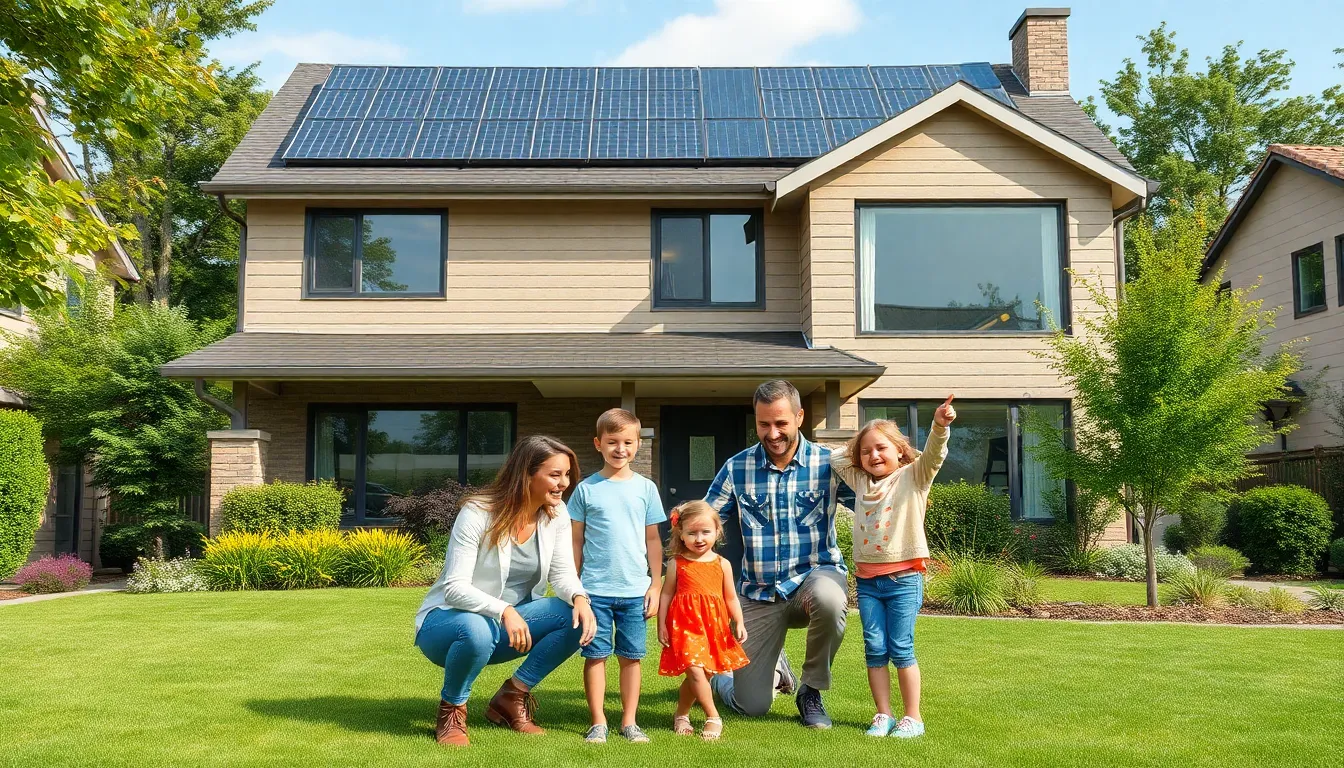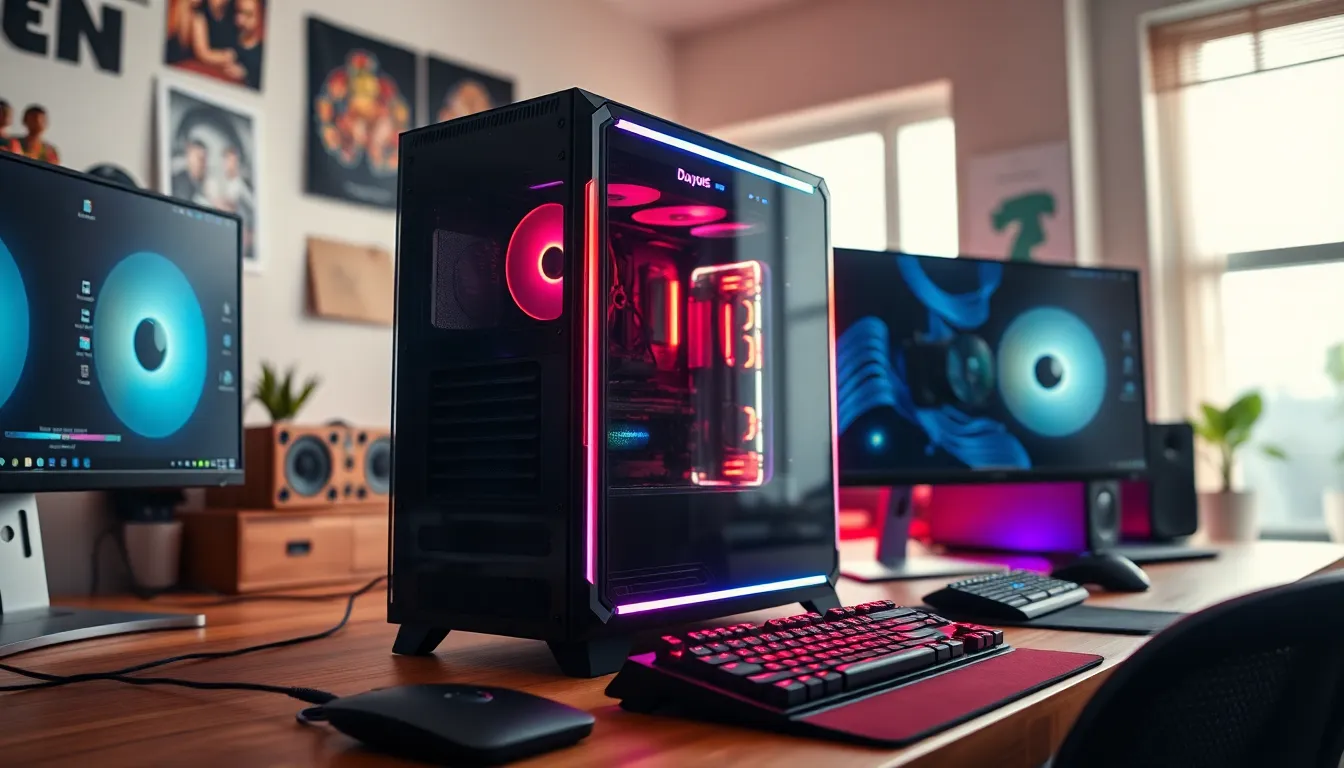In today’s world, energy-efficient homes are more than just a trend; they represent a vital step towards sustainable living. As energy costs soar and environmental concerns rise, homeowners are increasingly seeking ways to reduce their carbon footprint while saving money. Energy-efficient homes not only provide comfort and convenience but also contribute to a healthier planet.
From innovative insulation techniques to smart technology integration, these homes are designed to maximize energy use and minimize waste. By adopting energy-efficient practices, homeowners can enjoy lower utility bills and increased property value. As the demand for eco-friendly living grows, understanding the benefits and features of energy-efficient homes becomes essential for anyone looking to make a positive impact.
Table of Contents
ToggleWhat Are Energy-Efficient Homes?
Energy-efficient homes incorporate design and technology aimed at reducing energy consumption. These residences focus on minimizing waste while maximizing comfort and sustainability. Key characteristics include advanced insulation, energy-efficient windows, and smart appliances.
- Advanced Insulation: Proper insulation reduces heat loss in winter and keeps homes cooler in summer. This efficiency lowers the demand for heating and cooling systems.
- Energy-Efficient Windows: Double or triple-paned windows significantly decrease energy loss. These windows help maintain internal temperatures and lower heating and cooling costs.
- Smart Appliances: Energy Star-rated appliances consume less energy compared to standard models. They optimize usage and assist homeowners in monitoring and managing energy consumption.
- Renewable Energy Sources: Many energy-efficient homes utilize solar panels or other renewable energy systems. These sources provide clean energy, reduce reliance on fossil fuels, and lower utility bills.
- Water Conservation Systems: Efficient water fixtures, such as low-flow faucets and toilets, enhance water conservation within energy-efficient homes. These systems not only lower water bills but also reduce environmental impact.
Incorporating these features results in substantial energy savings and a smaller carbon footprint. Energy-efficient homes contribute positively to both household budgets and environmental sustainability.
Benefits of Energy-Efficient Homes
Energy-efficient homes provide multiple advantages, significantly impacting the environment and homeowners’ finances. These benefits include minimizing carbon footprints, lowering utility bills, and enhancing overall comfort.
Environmental Impact
Energy-efficient homes reduce greenhouse gas emissions by using less energy. Features like high-performance insulation and energy-efficient windows decrease the need for heating and cooling, thus lowering reliance on fossil fuels. Incorporating renewable energy sources, such as solar panels, further decreases environmental impact by harnessing clean, sustainable energy. Smart technologies monitor energy consumption, allowing homeowners to make informed decisions that further minimize their ecological footprint.
Financial Savings
Energy-efficient homes lead to substantial savings on utility bills. Homeowners can save between 10% to 50% on energy costs annually, depending on the efficiency measures implemented. Incentives like tax credits and rebates for energy-efficient upgrades can offset initial investments. Increased property values also result from energy-efficient features, with homes typically selling for 5% to 15% more compared to traditional homes, enhancing long-term financial viability.
Improved Comfort
Energy-efficient homes enhance indoor comfort by maintaining stable temperatures throughout the year. Advanced insulation and energy-efficient windows minimize drafts, providing a more consistent indoor climate. Additionally, smart thermostats learn homeowners’ preferences, optimizing heating and cooling schedules for maximum comfort without energy waste. Improved air quality results from proper ventilation systems, contributing to a healthier living environment.
Key Features of Energy-Efficient Homes
Energy-efficient homes incorporate design elements that significantly reduce energy consumption while enhancing comfort and sustainability. Key features include advanced insulation, energy-efficient appliances, and the use of renewable energy sources.
Insulation
Effective insulation minimizes heat transfer between the interior and exterior of a home, maintaining desired temperatures. Common insulation materials include spray foam, fiberglass, and cellulose. These materials limit heat loss in the winter and heat gain in the summer, contributing to a reduction in heating and cooling costs. Proper insulation often leads to energy savings of 10% to 50% on heating and cooling bills.
Energy-Efficient Appliances
Energy-efficient appliances use less electricity and water compared to standard models, operating while consuming fewer resources. Appliances such as refrigerators, washing machines, and dishwashers often carry the ENERGY STAR label, indicating compliance with strict efficiency standards. Homeowners can expect energy consumption reductions of 20% to 50% depending on the appliance, resulting in significant savings over time.
Renewable Energy Sources
Integrating renewable energy sources, such as solar panels and wind turbines, further enhances a home’s energy efficiency. Solar panels convert sunlight into electricity, potentially covering a large portion of a household’s energy needs. Additionally, solar water heaters can provide hot water with minimal energy input. Using renewable energy sources not only lowers utility costs but also reduces reliance on fossil fuels, decreasing overall carbon footprints.
Tips for Creating an Energy-Efficient Home
Implementing energy-efficient practices enhances comfort and reduces utility costs. Consider the following strategies for optimizing energy use in homes.
Energy Audits
Conducting energy audits identifies areas where energy efficiency can improve. Through an energy audit, homeowners discover potential leaks in insulation, ineffective appliances, and outdated heating or cooling systems. Professional energy auditors can assess energy usage and recommend solutions. Simple DIY audits involve checking for drafts around windows and doors, assessing insulation levels, and reviewing energy bills for patterns.
Upgrading Systems
Upgrading to energy-efficient systems plays a crucial role in maximizing energy savings. Installing high-efficiency heating, ventilation, and air conditioning (HVAC) systems can reduce energy consumption by 20% to 50%. Replacing outdated water heaters with energy-efficient models, such as tankless water heaters, offers additional savings. Transitioning to ENERGY STAR-rated appliances ensures that household devices consume 10% to 50% less energy than standard models, significantly impacting utility bills.
Energy-efficient homes represent a crucial step toward sustainable living. By integrating advanced technologies and renewable energy sources, homeowners can significantly reduce their energy consumption and environmental impact. The financial benefits are clear with potential savings on utility bills and increased property values.
As the demand for greener living solutions rises, investing in energy-efficient features not only enhances comfort but also contributes to a healthier planet. Homeowners who embrace these practices position themselves favorably in a changing real estate market while promoting a more sustainable future for all. Adopting energy-efficient strategies is more than just a trend; it’s a necessary evolution in how homes are built and maintained.




